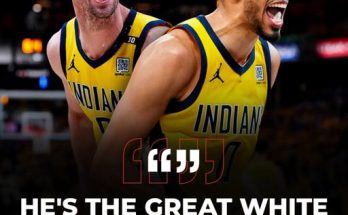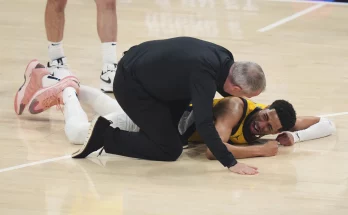As the Los Angeles Dodgers cruise through the 2025 MLB season, one question continues to loom large despite their star-studded roster and explosive offense: will their pitching improve enough to carry them through October?
With a payroll that exceeds $300 million and a lineup featuring Shohei Ohtani, Mookie Betts, and Freddie Freeman, the Dodgers have put all their chips on the table in pursuit of another World Series title. However, a rash of injuries, inconsistent bullpen performances, and lingering concerns about the starting rotation have created uncertainty that no amount of star power can fully erase. Still, the team remains confident—perhaps defiantly so. But why?
Let’s examine the state of the Dodgers’ pitching, the problems they’re facing, and the reasons for their unwavering belief that help is either already here—or on the way.
I. The Starting Rotation: Talent with Caveats
The Dodgers entered the season with what many considered an elite rotation on paper. Yet, few rotations have been subjected to as much scrutiny this year.
1. Walker Buehler’s Return and Rust
After missing all of 2024 due to Tommy John surgery, Walker Buehler returned to the rotation in May with hopes that he would once again anchor the staff. His velocity has looked solid, and his command is gradually sharpening. But rust is evident. In his first few starts back, he showed signs of a pitcher still working on feel, especially with his secondary pitches.
The Dodgers are banking on Buehler regaining his All-Star form by midseason. But that’s still a projection, not a guarantee.
2. Yoshinobu Yamamoto’s Growing Pains
When the Dodgers signed Yamamoto to a 12-year, $325 million contract, they weren’t just bringing in a star—they were importing the most dominant pitcher Japan had seen in a generation. He showed flashes of brilliance early but has also had to adjust to MLB hitters, a new ball, a longer season, and a different mound.
While Yamamoto owns an ERA under 4.00 and is racking up strikeouts, his command and stamina late in games have raised flags. The Dodgers believe that these growing pains are temporary and that Yamamoto’s elite stuff will shine brighter as the year progresses.
3. Clayton Kershaw’s Shadow
Though Kershaw has not yet pitched in 2025, the future Hall of Famer has been ramping up his throwing program following offseason shoulder surgery. Kershaw’s potential return in late summer could be a huge morale boost—not just from a pitching standpoint, but as a leadership presence.
No one is counting on vintage Kershaw. But even a savvy, experienced version who can go five innings every fifth day would stabilize the back end of the rotation.
4. Depth Issues and the Reliance on Rookies
The Dodgers have used openers and bullpen games far more often than they’d like. Injuries to Bobby Miller and Emmet Sheehan have forced the team to turn to rookies like Landon Knack and River Ryan. While these arms have shown promise, they lack the experience needed to inspire October confidence.
That said, the Dodgers front office has always viewed pitching depth as a fluid and adaptable asset. Internal development continues, and the team is optimistic that by late summer, this current turbulence will settle into a stronger, more defined rotation.
II. Bullpen Woes and Bright Spots
If the rotation’s inconsistency is frustrating, the bullpen’s volatility has been maddening.
1. Evan Phillips’ Injury Stings
Losing closer Evan Phillips to a hamstring strain was a major blow. Phillips had been one of MLB’s most effective relievers, and without him, the ninth inning became a game of roulette. The Dodgers have tried a closer-by-committee approach with mixed results.
Brusdar Graterol, also dealing with shoulder issues, hasn’t pitched yet this season either. In his absence, Ryan Brasier and Alex Vesia have taken on higher-leverage roles, but with varying levels of success.
2. Alex Vesia’s Emergence
Vesia has been one of the few bullpen bright spots. After a shaky 2024, he returned with improved command and a sharper slider. He’s handling lefties and even some righties with more consistency, showing he could be a late-inning weapon if used strategically.
3. Midseason Reinforcements?
The Dodgers have been connected to trade rumors involving relievers from non-contending teams—names like Tanner Scott (Marlins), Mason Thompson (Nationals), or even a reunion with Joe Kelly have surfaced. President of Baseball Operations Andrew Friedman has never been shy about dealing prospects for proven bullpen help, especially if the team smells a title run.
There’s also the possibility that Graterol and Phillips return healthy by August. If both are back to form and join a bullpen that includes Vesia, Brasier, and a potential deadline addition, the bullpen could transform from a liability to a strength overnight.
III. Why the Dodgers Still Believe
Despite the rollercoaster ride on the mound, there are several reasons the Dodgers continue to express full confidence in their pitching staff.
1. Elite Run Support Buys Time
The Dodgers’ offense leads the majors in runs scored, slugging percentage, and home runs. They’ve bailed out the pitching staff more than once with 8–9 run outbursts. This firepower has allowed the team to remain in first place in the NL West despite inconsistent pitching.
The front office sees this as a luxury—they don’t need perfection from the mound right now. They need improvement by September.
2. High Upside Arms Are Getting Healthy
By late July, the Dodgers could theoretically have a fully operational rotation consisting of Yamamoto, Buehler, Miller, Sheehan, and Kershaw. That’s five pitchers with frontline potential. Combine that with a potentially reinforced bullpen, and the outlook dramatically changes.
They’re betting on time and health—and recent updates suggest that’s not unreasonable.
3. Andrew Friedman’s Trade Deadline Track Record
The Dodgers have consistently upgraded at the deadline. From Yu Darvish to Max Scherzer, Friedman has shown a knack for identifying and acquiring impact arms. The team doesn’t need to rush into a trade in June. They’ll likely wait until July when prices drop and sellers become clearer.
Given the strength of their farm system—headlined by names like Dalton Rushing, Josue De Paula, and Nick Frasso—the Dodgers have the currency to make almost any deal they want.
4. Veteran Leadership and Culture
The clubhouse doesn’t panic. Freddie Freeman, Mookie Betts, and Ohtani provide a steadying presence, and manager Dave Roberts excels at maintaining composure during rough patches. The pitching staff, no matter how inconsistent, knows the team isn’t going to implode over a few bad outings.
This culture of resilience gives them an edge that less experienced teams lack. There’s a belief that once the dust settles, the real Dodgers will emerge.
IV. Looking Ahead: The Second Half and October Dreams
By the time August rolls around, the Dodgers expect to be clicking on all cylinders. They don’t necessarily need a dominant pitching staff to win the World Series—but they need one that’s good enough. A staff that can hold leads, steal a few low-scoring games, and not overburden the offense.
They’ll monitor Buehler’s innings, be cautious with Kershaw’s return, and continue stretching out Yamamoto. In the bullpen, a clearer hierarchy will form once injuries resolve and trade reinforcements (likely) arrive.
But make no mistake—the front office knows what’s at stake. Anything short of a deep October run would be a failure given the investments made. If improvement doesn’t come internally, it will come via trade.



